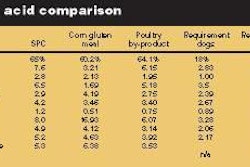In recent years, consumers have been getting a greater proportion of their health and nutrition information from media sources. In a 2000 survey by the American Dietetic Association, 48% of consumers polled said they got their nutrition information from television news and 47% said magazines were their primary source of information. Eighteen percent rated television as a very valuable information source. In fact, consumers value media news reports almost as highly as they value information from health practitioners.
In order to keep a finger on the consumer pulse, the International Food Information Council (IFIC) Foundation commissions a quantitative and qualitative analysis of media coverage every two years. In 2003, the Food for Thought V study found the top three issues to be: The epidemic of obesity, the benefits of functional foods and the biotechnology trade wars. All three are key trends to watch.
Obesity
Obesity is the lens through which all nutrition issues are now viewed. The rate of obesity in the United States has grown to epidemic proportions over the last 20 years. The latest government data indicate that approximately 64% of adults are either overweight or obese. Based on these and other statistics, IFIC identified the need to assess how consumers think about this issue. IFIC commissioned StrategyOne to conduct qualitative research to explore key themes associated with the obesity issue and how it relates to consumer attitudes about weight and health.
The researchers set out to answer the following questions: How do consumers think about managing their weight? What are the barriers to better weight management? What are the motivators to better weight management?
Phase One
The research was conducted in three phases. In Phase One, focus groups were conducted to identify concepts and communication principles that would lead to the development of motivating messages. Due to the qualitative nature of the research, the results cannot be projected to the entire population.
Because people equate the word "diet" with denial and sacrifice, messages on weight and health must be phrased in positive and inclusive terms. They understand the importance of maintaining a healthy weight and lifestyle, but this understanding does not always change their behavior. Nevertheless, opportunities exist to motivate consumers to make positive changes. The key motivational themes of family, appearance, disease prevention and support appeal to different people for different reasons, but they all represent possible motivators to change consumer behavior.
Phase Two
In order to obtain a better understanding of consumers' daily lifestyles, Phase Two of the research was conducted using in-home interviews with families assessing their food and eating habits, physical activity patterns and overall health. Then, the messages developed from Phase One were presented to the families for feedback. Using the feedback from the in-home interviews, the messages were revised to incorporate these findings.
Phase Three
Phase Three was conducted using focus groups to probe messages that best communicate how to achieve a healthy lifestyle. Participants expressed an interest in improving their health. When asked to indicate on a continuum where they would like to be in terms of health in the next 6-12 months, consumers saw plenty of room for improvement, but noted that being too far on the side of healthy indicated a lack of balance of another kind. Participants confirmed earlier findings from Phase One of the research in that they feel they have the information and knowledge of what they need to do, but they struggle with the mental discipline to make the necessary changes.
Underscoring the gap between information and motivation, consumers stated that until they are mentally ready to make changes, no amount of information will affect them. The information lies dormant until they gather the determination and drive to implement the knowledge they already have. Some consumers asserted that it would take a major event to motivate them enough to take action, while others had decided that until their life circumstances change, they will not change.
Functional food awareness
The second key food and health trend is functional foods. The health-conscious niche of consumers who are ready to make lifestyle changes may look to "functional foods" as a way to do so. Research by the IFIC Foundation has shown that 93% of American consumers believe that some foods have health benefits that go beyond basic nutrition. Furthermore, 85% are interested in learning more about functional foods.
In March 2002, IFIC built on quantitative and qualitative research dating back to 1996 which looked at consumer awareness and interest in functional foods. Cogent Research (formerly Axiom) conducted a telephone survey of 1,004 randomly-selected participants. The data are weighted to reflect the US population with statistical differences detected at ±3.1% at a 95% confidence interval.
Certain segments of the population are more aware of functional foods than others. Moreover, awareness increases with formal education, including some college and being highest for those with graduate school educations. Additionally, awareness increases with income, particularly for those earning US$75,000 per year or more compared to those earning less than US$35,000 per year. Fifty-five to 64-year-old consumers and those who use multi-vitamins have higher awareness of food component/disease pair associations compared to younger age groups and non-users.
More than eight in 10 consumers can associate at least one functional food with a disease or health condition. Consumers tend to be more aware of food component/disease pairs that involve their top health concerns such as cardiovascular disease and cancer. However, when aided, their awareness is higher for long-held food component/disease pairs. For example, the link between calcium and bone health is widely known.
Functional foods vs. nutraceuticals
Language is an important factor that can have a major influence on message effectiveness, and therefore on stimulating behavior change. Consumers preferred the term functional foods over nutraceuticals. However, neither term is conducive to improved understanding.
Either term can give the impression that there is a category of foods that are "functional"perceived only as foods that have added beneficial components. In reality, all foods have some function, even if it is mostly taste and enjoyment. Also, it is important to remember that health benefits can be obtained from traditional foods as much as from fortified foods and supplements.
Although general interest in functional foods is high, much education is still needed. Message effectiveness is achieved through consideration of not only language, but also the individual's knowledge, attitudes and behaviors.
Biotechnology
A third trend to watch for in the future is food biotechnology. While consumers can glean health benefits through the consumption of functional foods, another area which has potential beneficial health implications is food biotechnology. Biotechnology already offers the needed technology to produce higher crop yields, plants that are naturally protected from disease and insects. Further potential are more nutritious and better-tasting foods. For instance, efforts are underway to develop oils which will reduce trans-fatty acids in the food supply.
According to consumer research conducted in January 2004 by Cogent Research for IFIC, 59% of consumers believe that the technology will benefit them or their families within the next five years. Respondents anticipate benefits in quality and taste (37%), health and nutrition (31%) and reductions in chemicals and pesticides (12%), among others.
Furthermore, the survey, consisting of approximately 1,000 telephone interviews among a nationally representative sample of US adults, found that a majority of consumers would be likely to purchase foods modified through biotechnology to be protected from insect damage and require fewer pesticide applications (66%), or to have improved taste or freshness (54%). Additionally, consumers who have heard or read about biotechnology are significantly more likely to purchase biotech food products for these benefits.
It is notable that unaided US consumers do not mention products of biotechnology as foods which they avoid. Additionally, the majority of consumers are confident in the US Food and Drug Administration (FDA) in terms of keeping the US food supply safe. Fifty-three percent of consumers stated their support of the current labeling policy for foods produced through biotechnology.
In 2004, the IFIC survey added several questions regarding consumer attitudes concerning animal biotechnology. Consumer awareness of animal biotechnology is lower (39% have heard nothing at all) than awareness of plant biotech. It is therefore not surprising that 32% of Americans state that they do not know enough to form an opinion on the subject and another 11% are neutral (28% have a favorable impression, 29% unfavorable).
Effective communication is key
Consumer research indicates that awareness and knowledge vary greatly across food safety and nutrition topics. One consistent theme is that effective communication requires messaging which speaks to individual interests and concerns. As consumers are inundated by the media with information regarding food safety and nutrition, the need for communicators to understand both consumer and media trends is paramount in importance. This understanding, along with strong scientific evidence, should serve as the foundation for effective communication.















